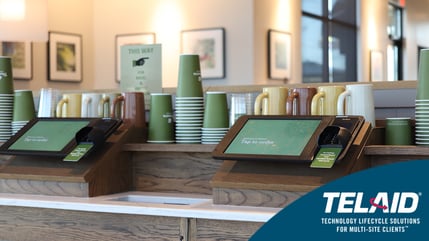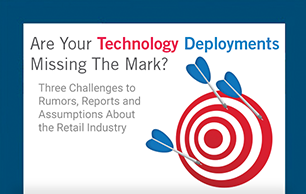 Dining out has returned after a significant downturn in 2020. According to Restaurant.org, total sales at eating and drinking establishments hit $64.9 billion in April 2021, compared with an anemic $29.9 billion in April 2020. With hope in the vaccine and a return to normal, consumers are revisiting their favorite dining establishments once again.
Dining out has returned after a significant downturn in 2020. According to Restaurant.org, total sales at eating and drinking establishments hit $64.9 billion in April 2021, compared with an anemic $29.9 billion in April 2020. With hope in the vaccine and a return to normal, consumers are revisiting their favorite dining establishments once again.
However, for those who have been away for a while, dining out may feel like a total departure from their pre-pandemic dining experiences. Technology has brought a radical shift to restaurants from quick-serve (QSR) to fast casual and even fine dining. Accelerated by the drive for touchless during the pandemic and the surge in curbside service and delivery, restaurants deployed all manner of technologies to automate, streamline and achieve contactless. Here are some of the big changes taking place in the dining industry due to new technologies.
Harmonized technologies drive value
Technologies are aligning all aspects of the business, from customer orders to operations, payment and delivery. Using data collected in one system such as the POS, restaurants can leverage the power of AI to more effectively predict peak traffic, adjusting staffing and operations to maximize preparedness and customer service at those times. The adoption of technology is making restaurants smarter in these ways and enhancing all aspects of the business.
Technology maximizes diner choices
Thanks to technologies in restaurants, diners now have more choices than ever: from how they pay for their order to how they pick-up their food to whether or not they have contact with someone in person. According to a survey from Wakefield and Foursquare, 62% of restaurants’ revenues came from delivery and takeout in 2020. This trend is expected to continue. Flexible delivery options, contactless payment and automated customer service are required for successful dining establishments even as we move forward from the pandemic.
Labor challenges accelerating automation
Significant levels of automation have already taken place with the adoption of mobile POS, self-serve kiosks and QR codes. However, labor shortages are accelerating investments in back-of-the-house automation technologies. From order ticket management to robots in the kitchen, automation is sure to bring additional change and efficiency.
As you undergo these changes, be savvy by planning and piloting prior to deployment. Evaluate your current infrastructure’s ability to handle expanded network devices. Take care to integrate systems to generate the maximum benefit possible from the data that resides in these systems. When you need help, contact Telaid for solution design services, rapid deployments and ongoing support and get a taste of working with the best.




